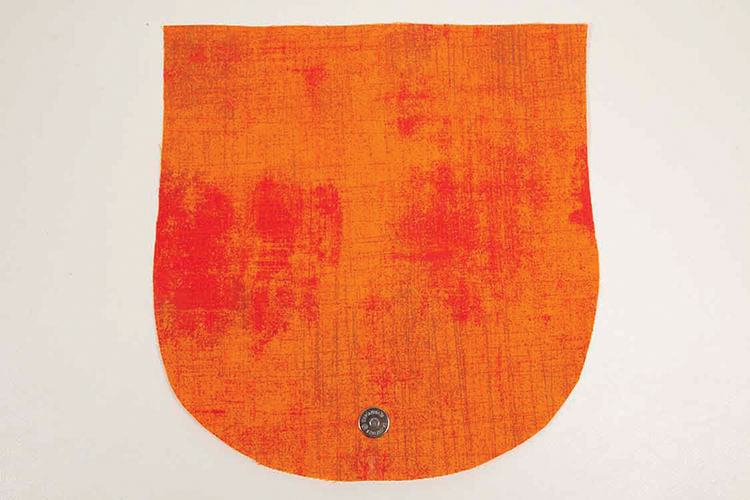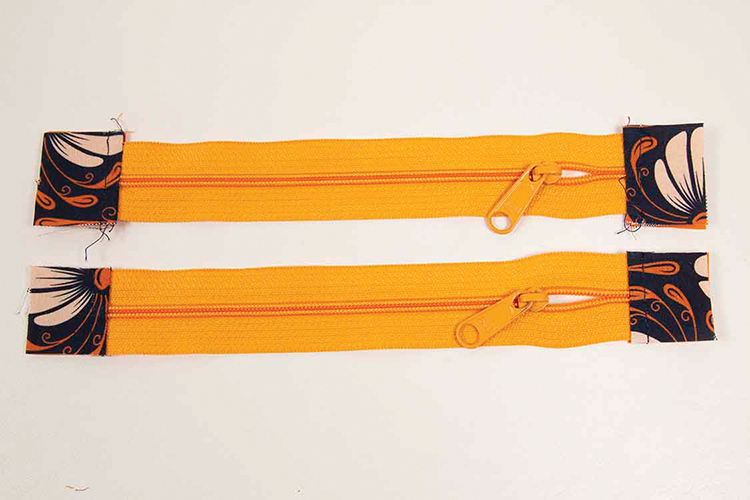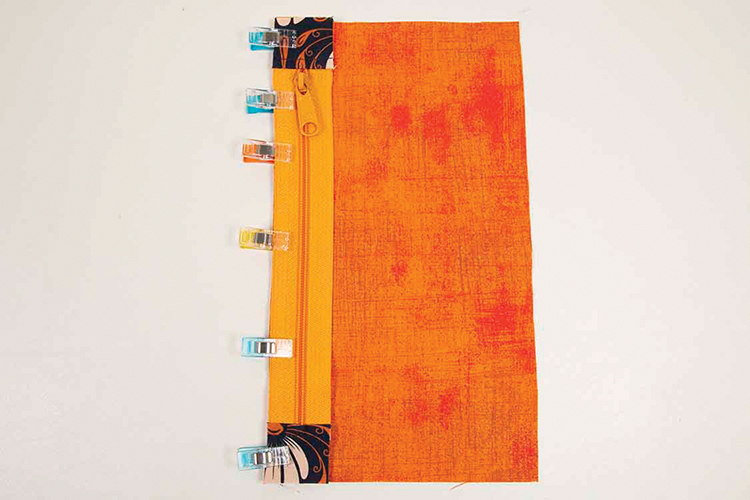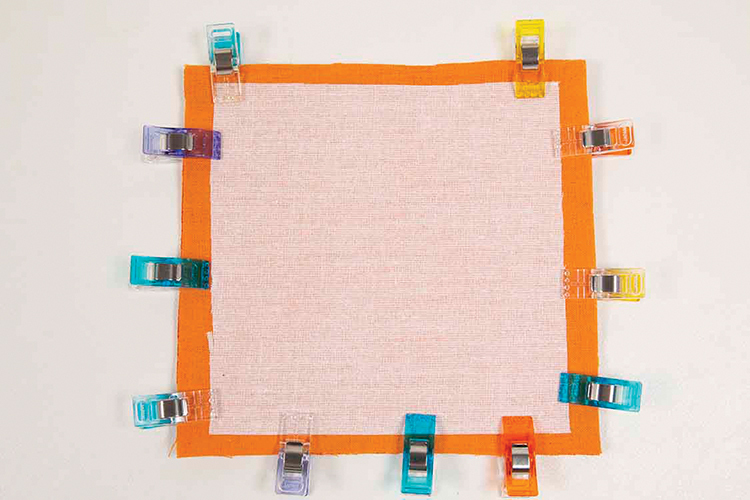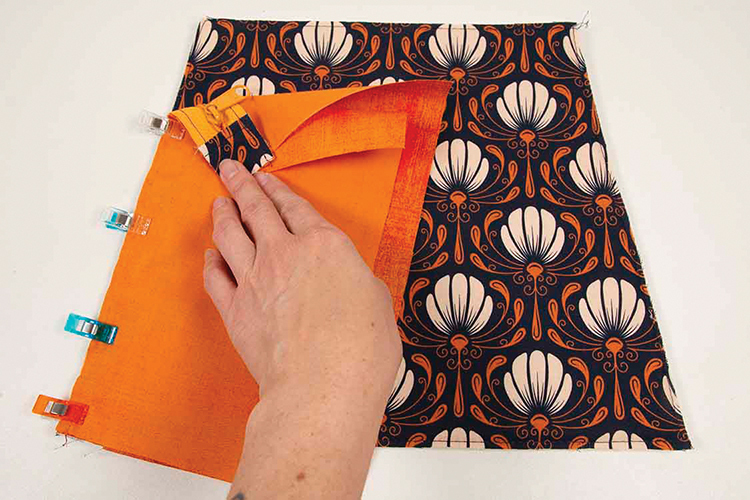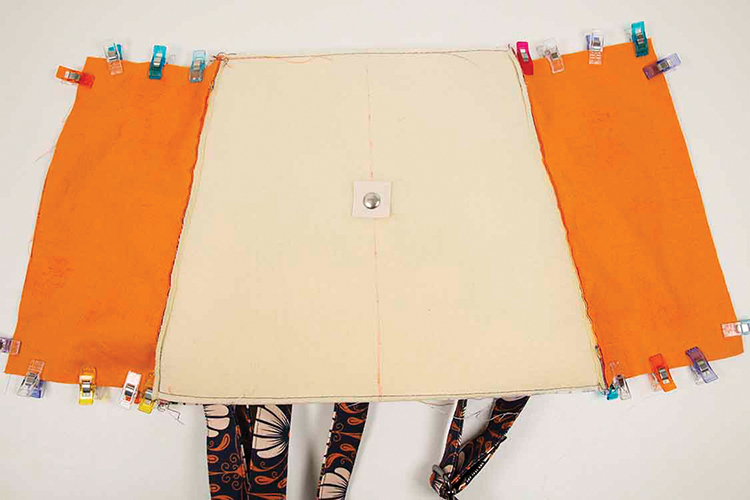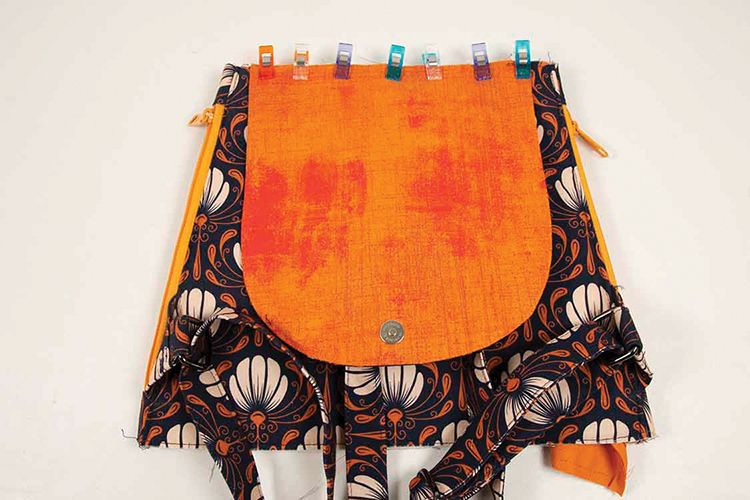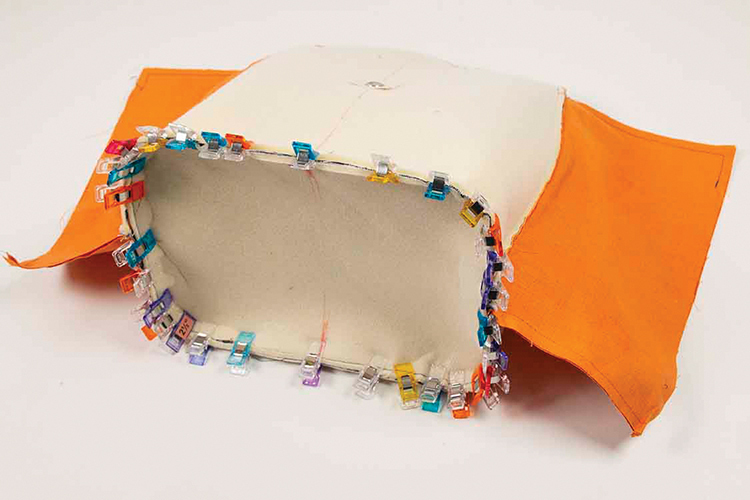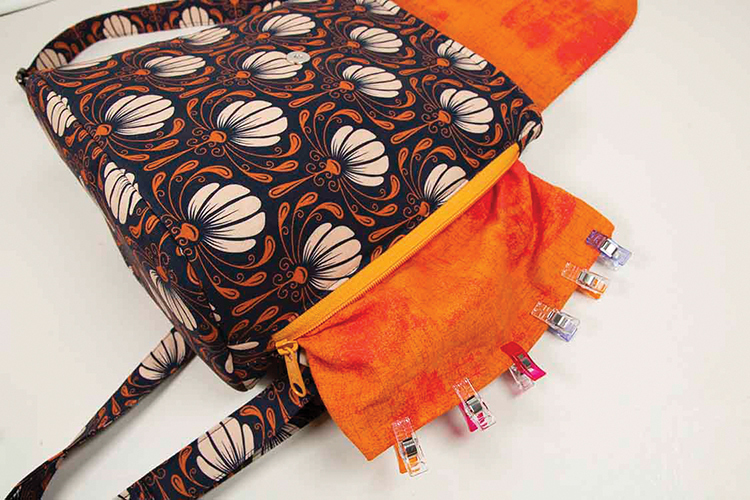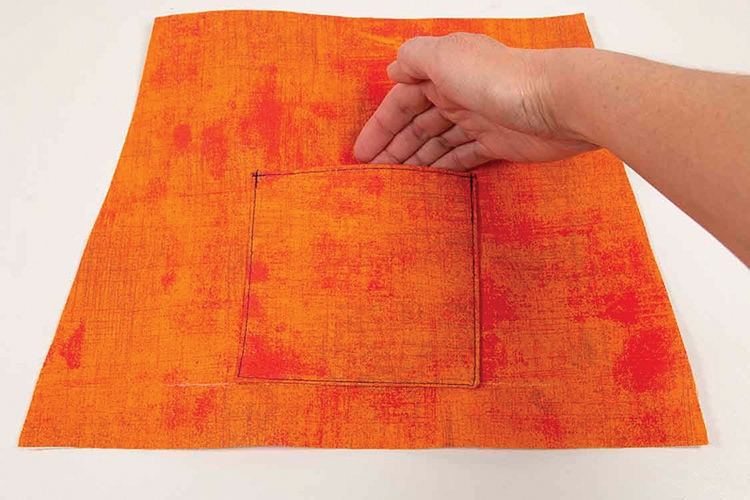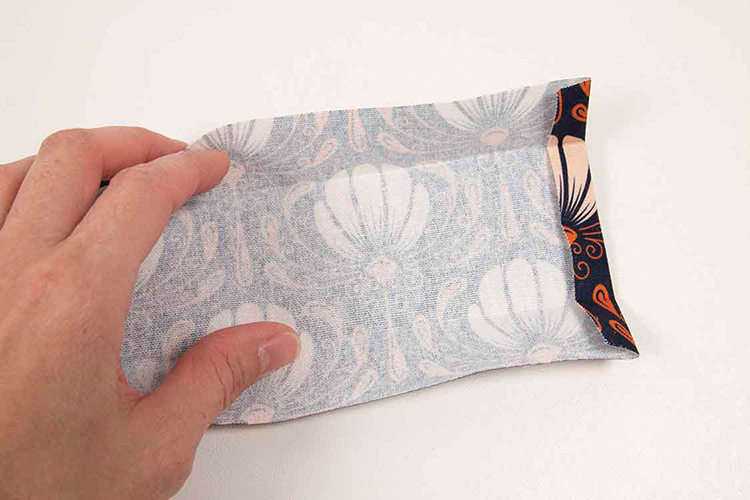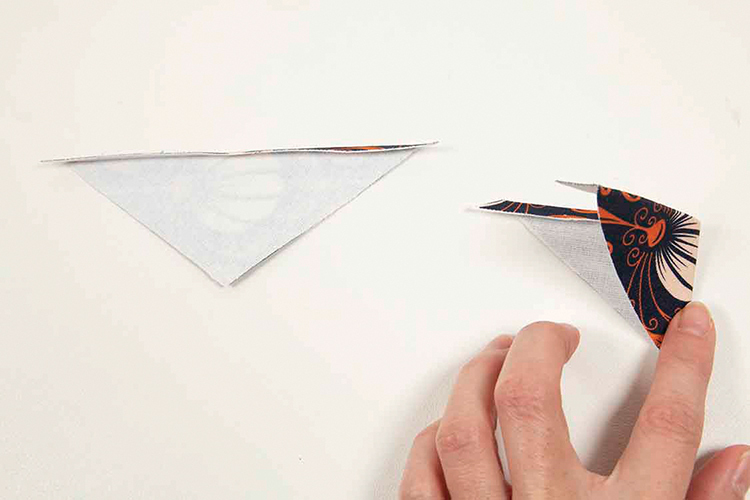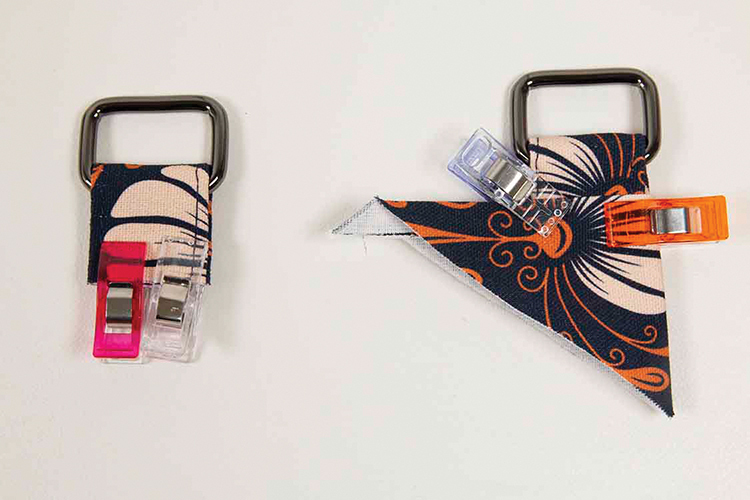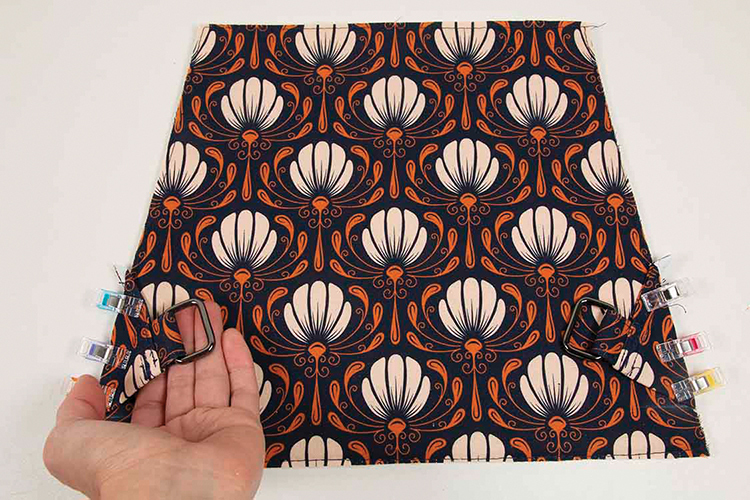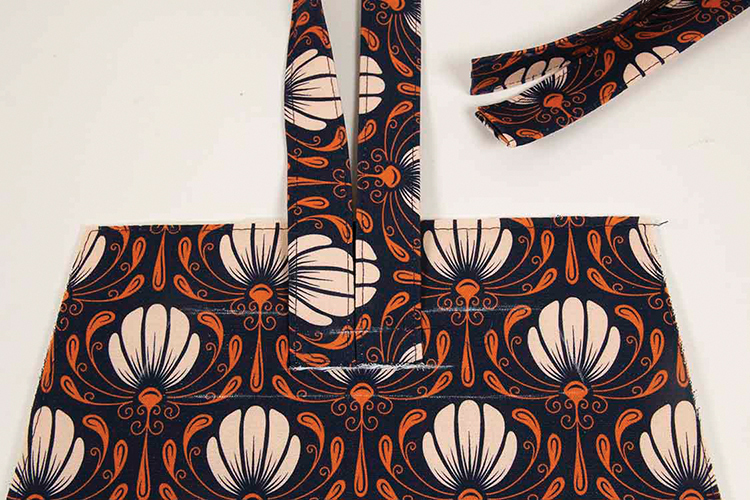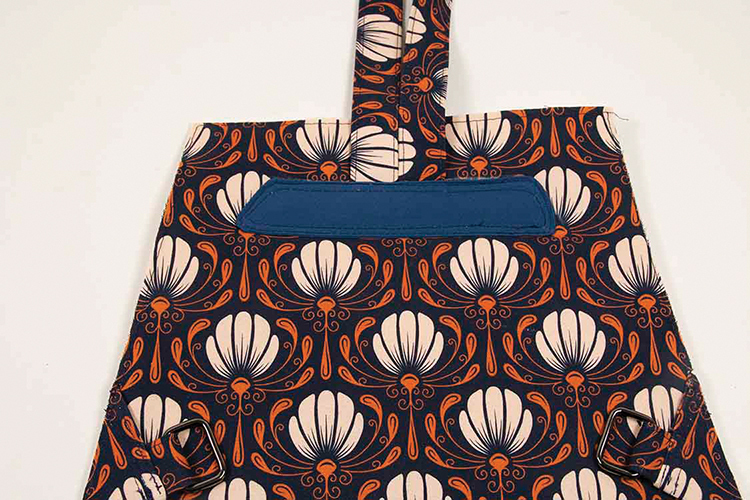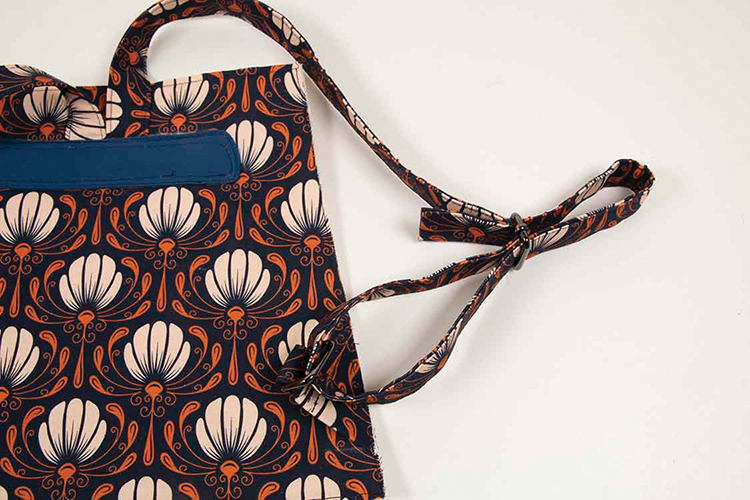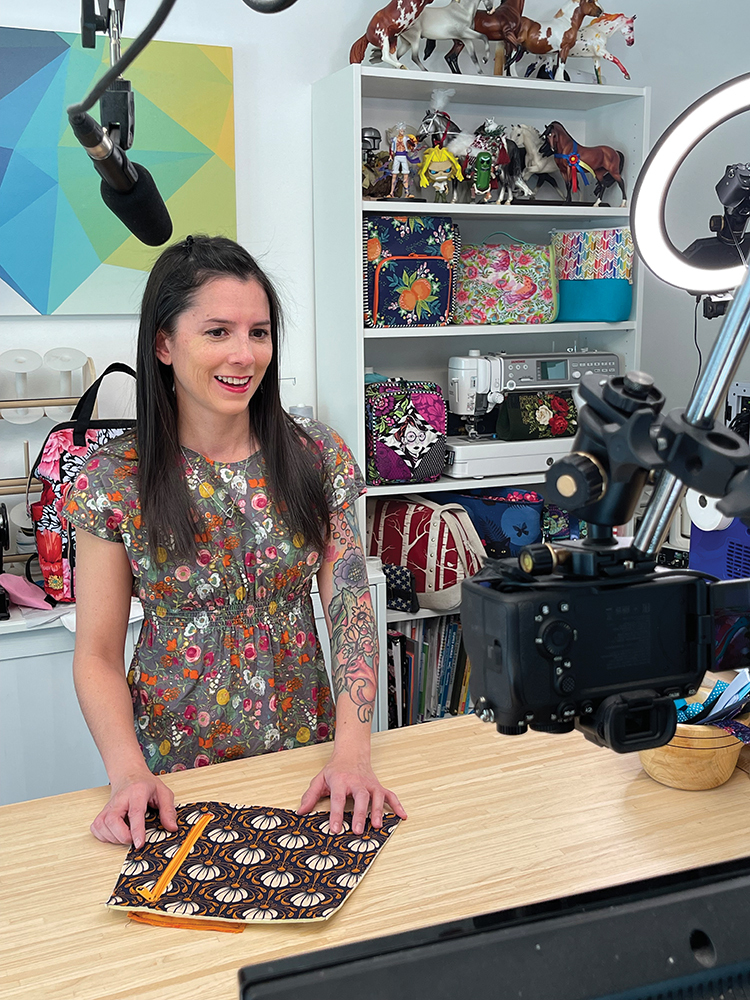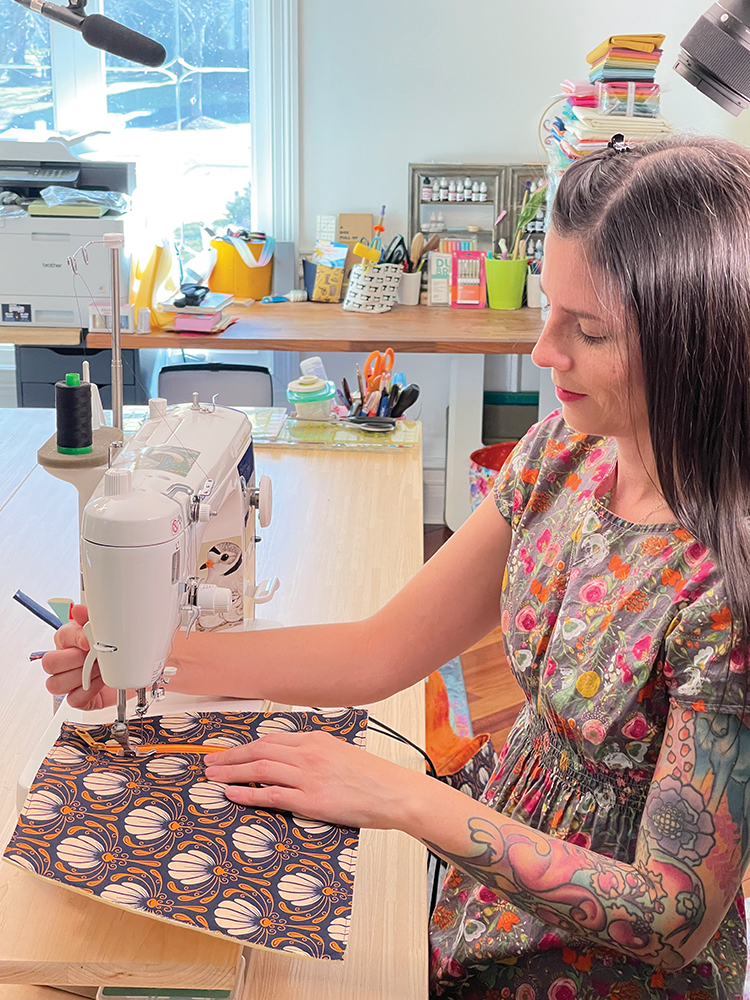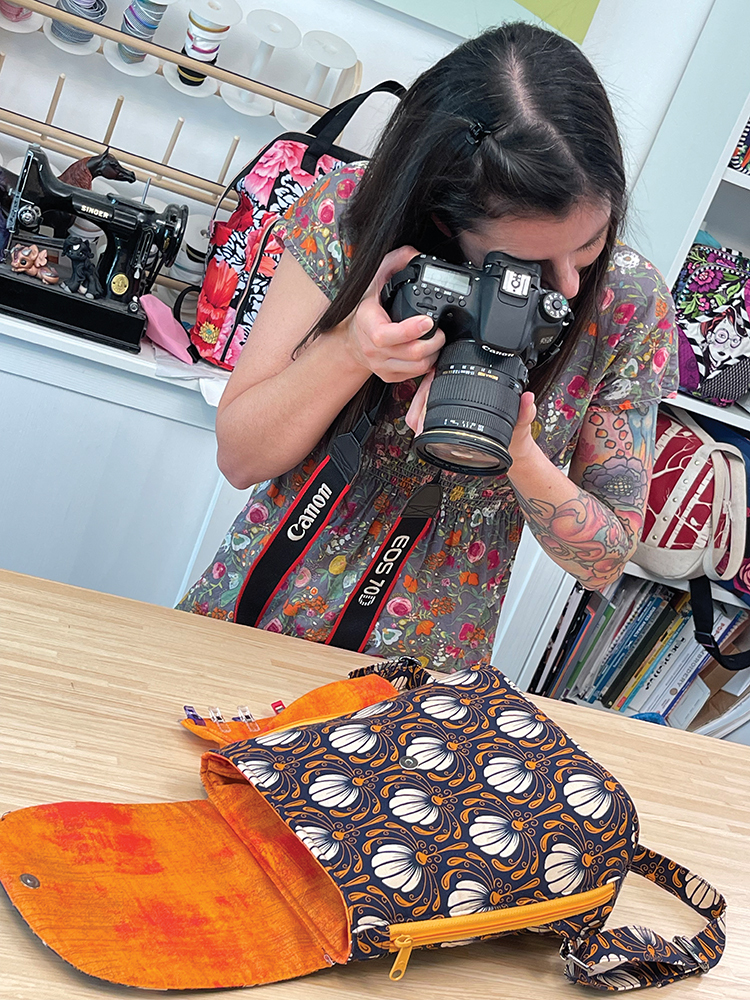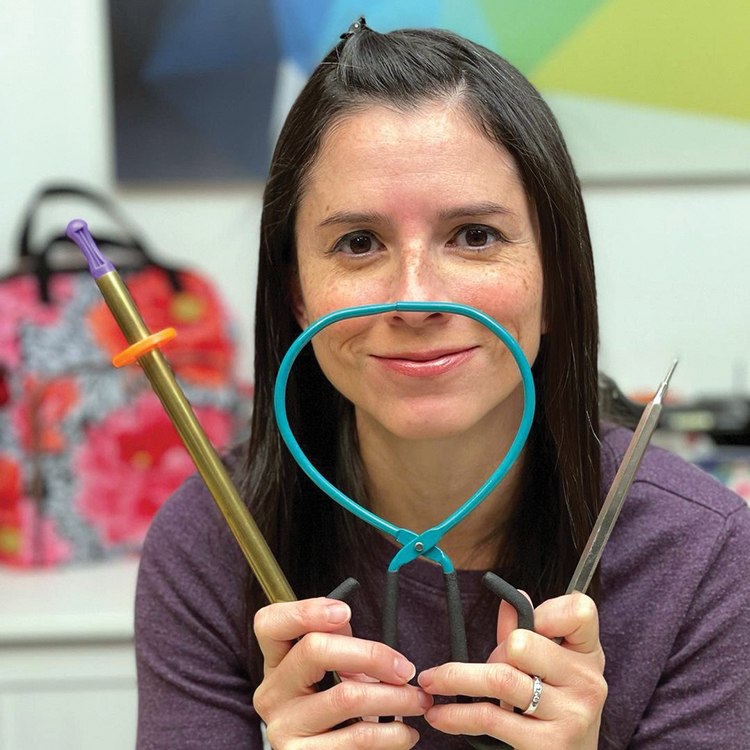
I fell in love with sewing bags in 2010. Re-learning to sew as an adult, I made quilts and clothes for my kids, but bags really fostered a serious passion in me.
I started my company, Sew Sweetness, in 2013. I am grateful to have been given the experience of several wonderful opportunities within the sewing industry, including writing two sewing books (Big-City Bags and Windy City Bags), designing two lines of fabric for Art Gallery Fabrics, teaching and lecturing at Quilt Market as well as around the country to quilt guilds, and partnering with other sewing-related companies (Aurifil Thread, Sizzix, Pellon, and others).
These experiences taught me so much, but I have learned the most from teaching in person. Teaching in person gave me a wealth of information about how people like to sew, what kinds of questions they have about certain techniques, and which steps they struggle with.
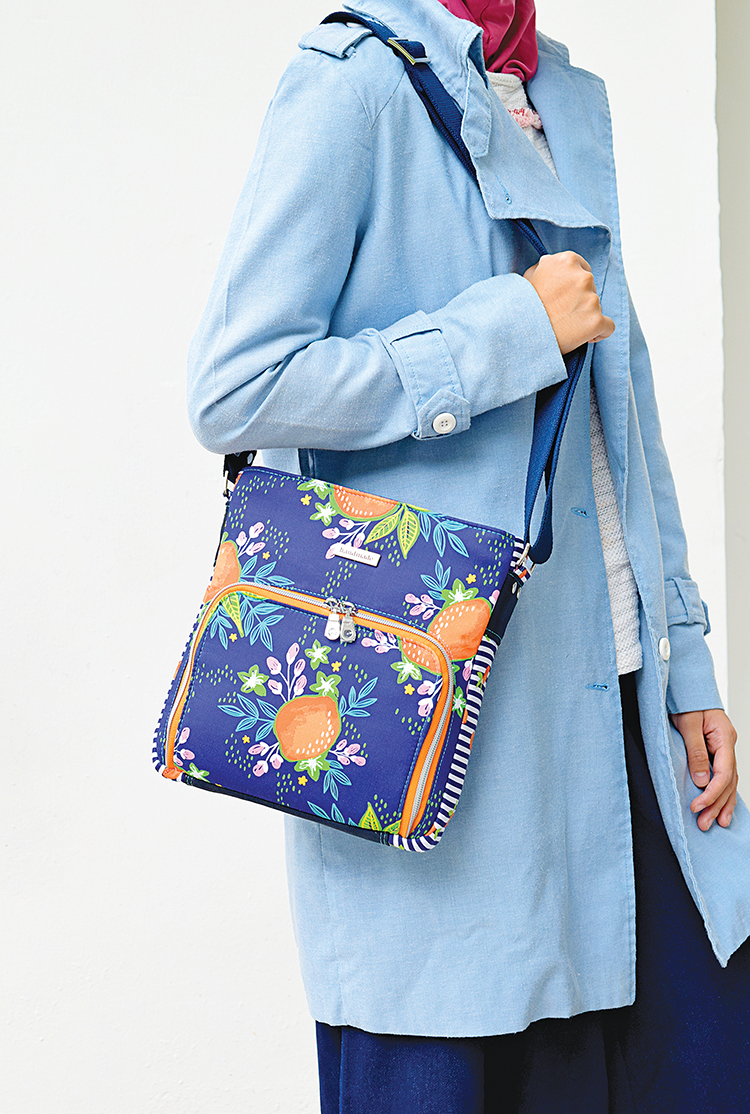
I find that the biggest turning point for Sew Sweetness was when my husband, Danny, joined the business full time, and learned video production and studio lighting. We began producing our live shows in 2017, and at that time also introduced step-by-step videos to go along with my sewing patterns. The videos are a really important component of the business because I feel that they make the projects accessible to anyone, no matter their skill level.
My parents and two children have also joined the Sew Sweetness team, packing up and shipping orders in our little commercial space. It is a lovely experience to have my whole family involved in the process. My dad doesn’t sew, but he has probably more knowledge than he would have ever expected about sewing notions and different fabrics! I also have two amazing women who have worked remotely for me for years: Bronwyn Carr and Michelle Graham. Chera Phipody also provides beautiful sewing and photography of the projects from overseas.
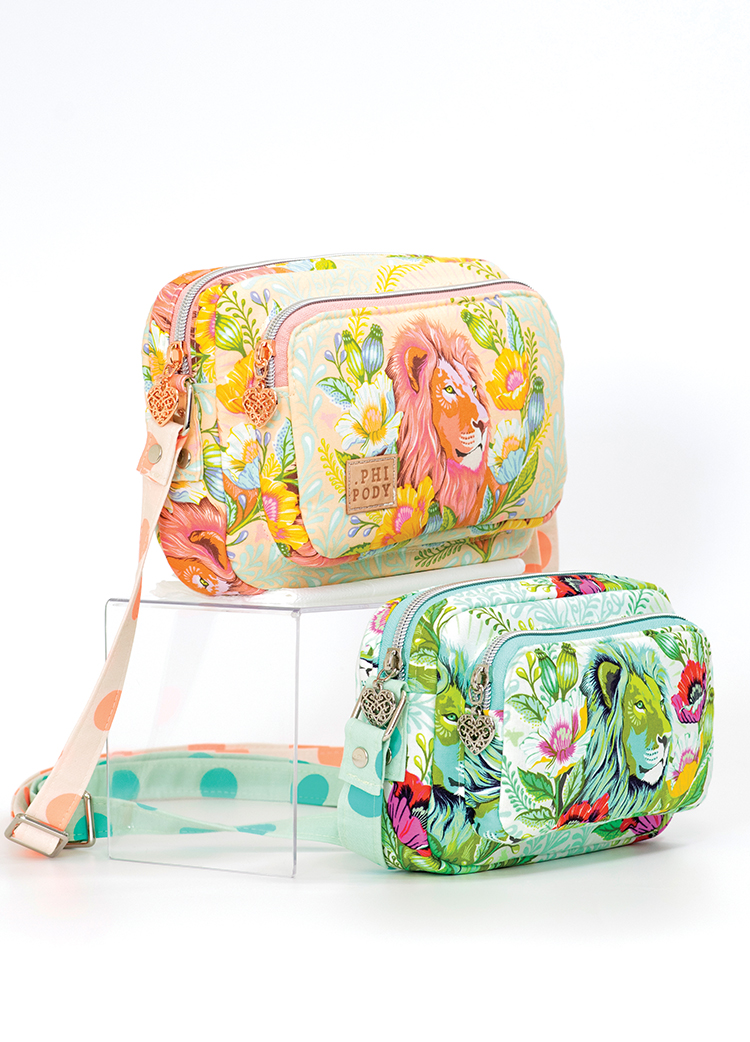
We sell cork fabric, zipper by the yard, over 100 different types of zipper pulls, sewing notions, waxed canvas, cotton fabric and acrylic templates. The acrylic templates — such as the Seam Guide, Rivet Centering Tool and Zipper Pocket template — make bag-making faster and more fun.
While I have a great team now, each task in the business was at one time completed by me. Packing orders in the basement, printing shipping labels one at a time, creating every social media post — I’ve done all of those things. I’m grateful that I now have staff to help, so that I have more time for writing patterns, but I am ready to jump in to do those previous tasks whenever I am needed (such as when someone goes on vacation).
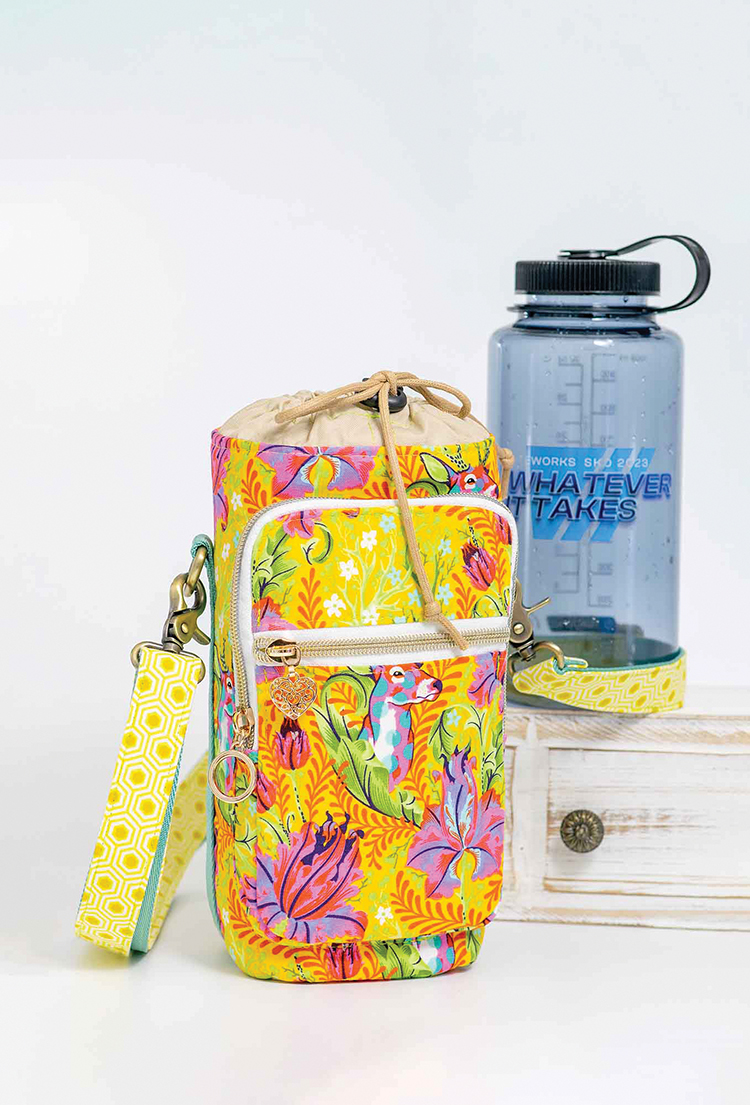
I think it is important to be patient when moving forward with next big steps. Businesses tend to ebb and flow throughout the years, and I’m glad that I didn’t sign a lease on a space too soon, as that’s a big monthly expense to consider.
The part of having an independent business that I appreciate the most is being agile and able to make adjustments or change course. I recently went through the experience of wanting to try a different tactic in the business. I asked my husband his opinion and he said, “I’m not sure what answer to give since it’s something we haven’t tried before.”
Just hearing that answer was almost like a lightning bolt in my head. Of course! You don’t know how something will turn out until you try it out. If it works, that’s fantastic; and if it doesn’t, you can go back to how you did things before. It sounds like such a simple answer, but it was what I needed to hear.
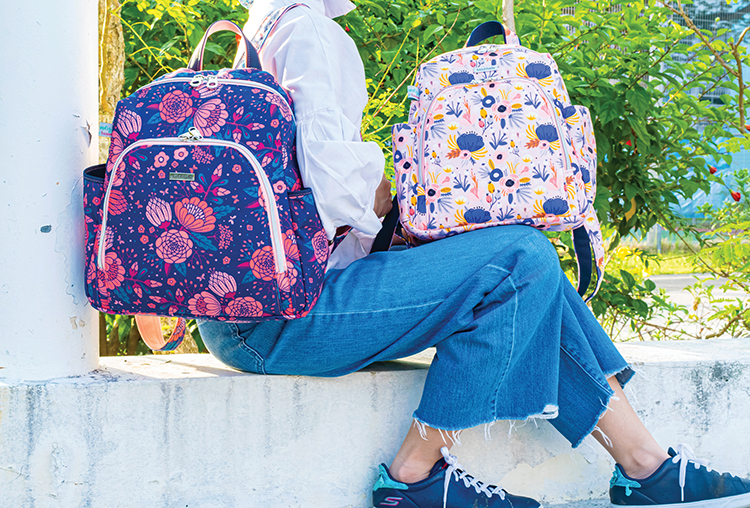
Customer service is something I take very seriously. Early on, if a customer had an issue, I would do my best to defend myself and make my response iron-clad. But I soon realized that if a customer needs help, they don’t need you to be right — they just need you to resolve their issue. In these instances, I try to separate myself from the business (because we often are tied so closely to our businesses, I pretend that I am a “customer service representative” of the business; that way, I feel like I can take things less personally) and put myself in their shoes.
Often if there is an issue, they are speaking from a place of frustration, annoyance, and perhaps even anxiety. The first step is acknowledging their feelings and expressing my understanding that I can see that the situation must be very difficult. I do my best to turn things around and make it my goal for them to leave the interaction pleasantly surprised, instead of angry, upset and ready to walk away.
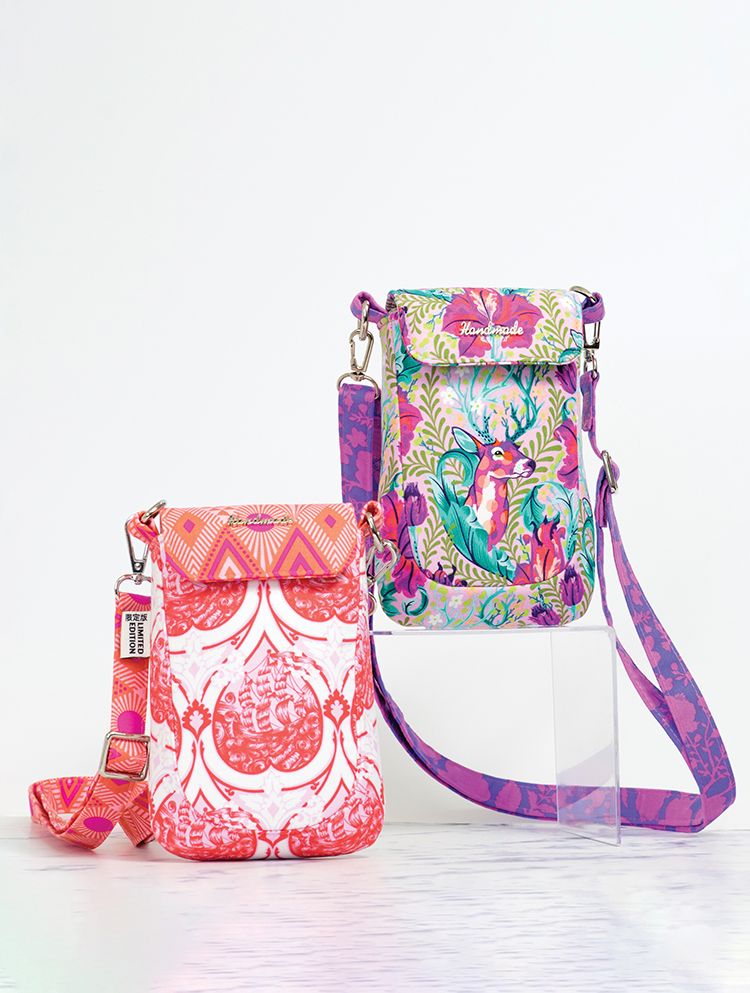
Kindness is also an important aspect of my business. In our current society, seeing negative or hurtful things posted online is an everyday experience. But I am lucky to have a Facebook group of Sew Sweetness sewists that is kind and supportive. I have heard many times that people in our group attribute our communal kindness to my example, but I think it is more a matter of people working together to make our group a place they actually want to be.
When it’s time for a live show, viewers often log on up to an hour before the show starts so they can chat with their friends in the comments (this is especially prevalent on YouTube). I really treasure that group nature of lifting everyone up.
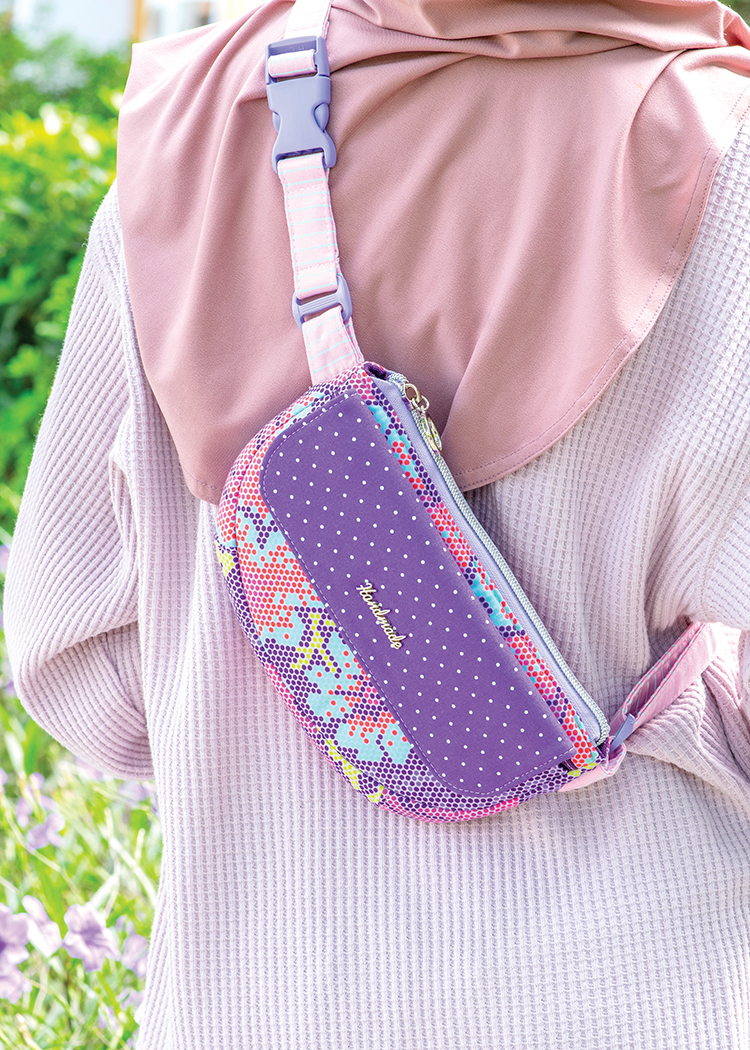
I recently realized that my current journey is about producing the work (in my case, sewing pat- terns). Not for the sake of making things to have another product listing on my website, but for the sake of bringing things back to why I fell in love with sewing in the first place. In the case of bags, I like figuring out how things fit together. Tinkering with this placement or that technique. I don’t re-do work I have done in the past, but I do recognize that, while I stand by my sewing instructions, sometimes new work comes with a better way to do something. And I think there is a certain joy about that because it illustrates the progression of learning.
Process
When designing a sewing pattern, I like to have control over the whole project from start to finish. The beginning of the process starts with a simple sketch of what I would like the bag or accessory to look like: I write out the supply list and then head to the computer to design the printable pattern pieces in Adobe Illustrator. I write out the pattern instructions in InDesign, then print my instructions and pat- tern pieces and get to work. I cut out my fabric and interfacing and begin sewing the bag together using my instructions. Along the way, I take a photograph of every step in the pattern, which I will later edit and add to the instructions using Photoshop.
While I am sewing from my own instructions, I make edits and often add extra things that I think will be really beneficial when sewing up the project (I call these my “Helpful Hints”). This all gets transferred back to the pattern instructions. Next, the pattern gets sent to my group of pattern testers, who make the project and give me very detailed feed- back on Google Forms. I finalize the instructions and then Danny films me making the entire project on camera.
We don’t use fast-forward for any segments, so the viewer gets to watch me make the entire project in great detail. We now have projector files, SVG files, and A0 files for the patterns, which Michelle prepares. Bronwyn gets ready to promote the new sewing patterns on social media and in the newsletter, and Chera provides professional photography and lifestyle photos for the projects. I generally release several sewing patterns at one time, so the process is repeated for each one.
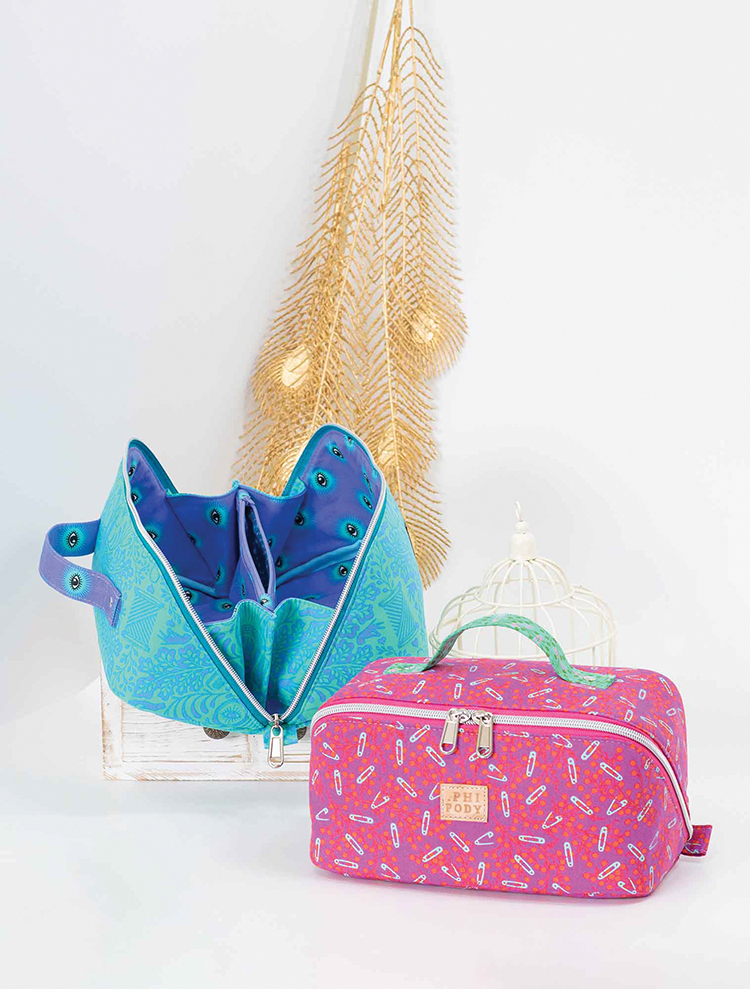
I definitely consider myself a student of the art of writing a sewing pattern, and I always want to learn more and be better. I have designed over 200 sewing patterns and I have a lot more that I am excited to get to design in the future.

